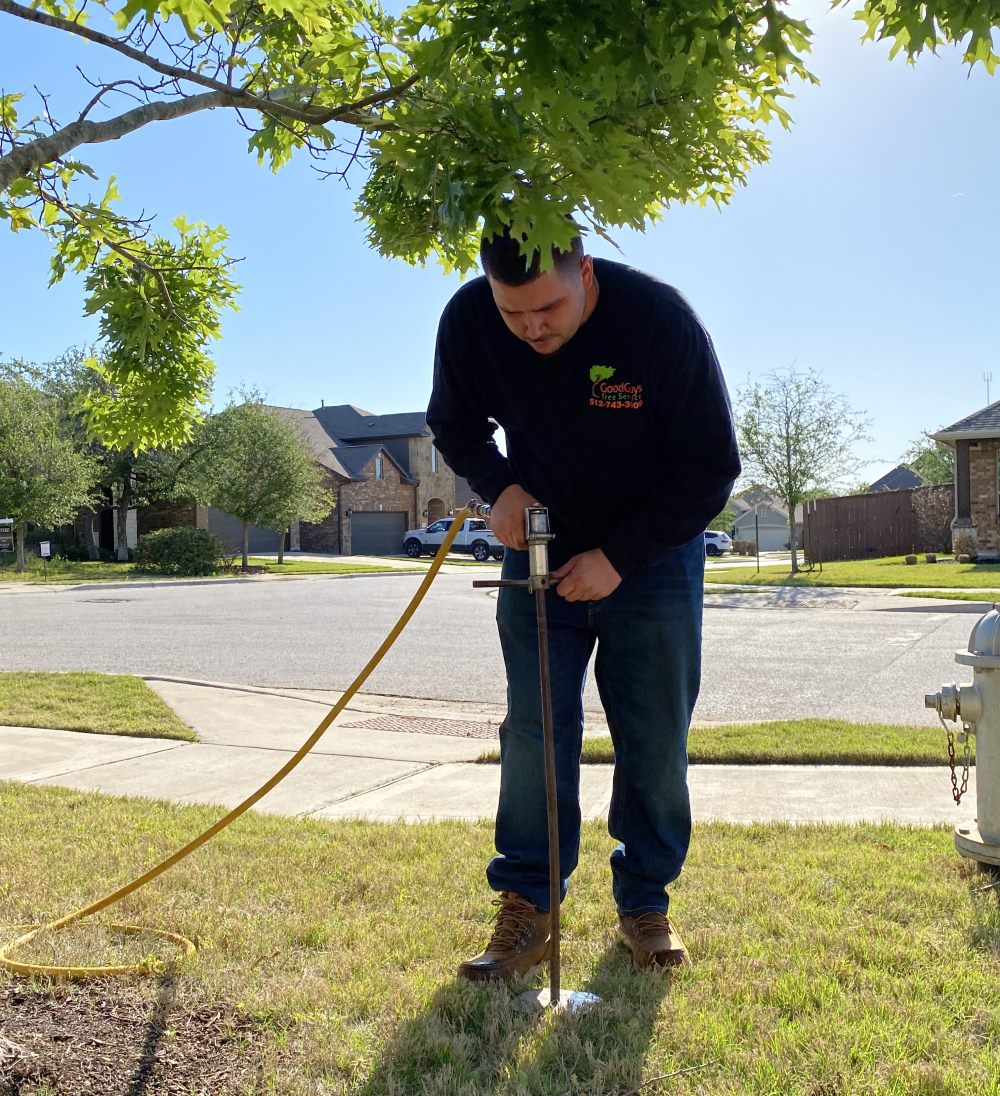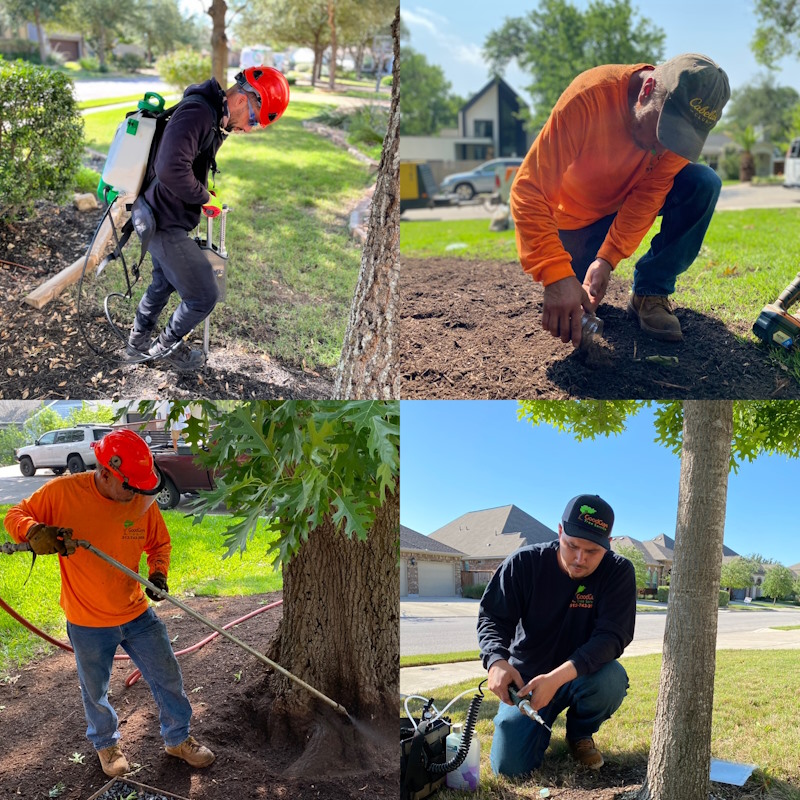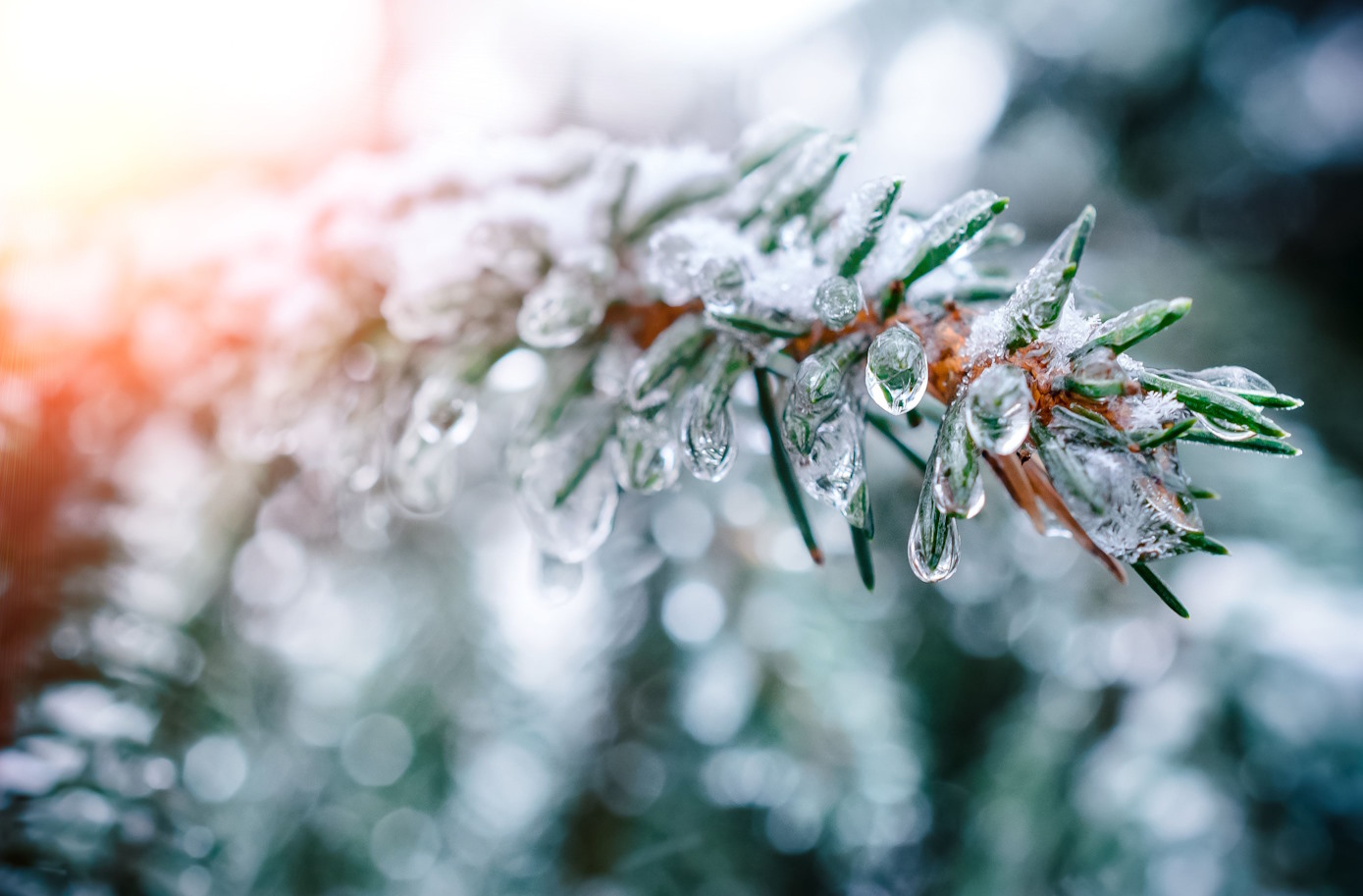Trees, like all living things, need nutrients, oxygen, and water to survive. Trees obtain these things through their roots. Trees have structural roots to hold them in place and give them stability and fine fibrous roots to absorb nutrients and water. Believe it or not but the majority of a tree’s roots are in the top 18″ to 24″ of soil. This is where trees will find nutrients, water, and oxygen in the largest abundance, usually.
What is Deep Root Fertilization?
The term deep root fertilization can be a little misleading. When we apply deep root fertilizer we are aiming for 4″-8″ below the surface of the soil. At this depth the fertilizer is applied below the roots of the grass in the layer of soil where most of the fine fibrous roots of trees are found. Deep root fertilization should be #2 on your list of priorities that goes along with any tree health plan. #1 on this list should be water. Water is life. Without water there is no life. Deep Root Fertilization should be #2 because it supplies trees with vital nutrients they are usually lacking in an urban environment.
Trees that live in a forest have optimal growing conditions. When leaves, limbs, and other organic matter dies and falls to the forest floor it decomposes and goes back into the soil as nutrients that trees and plants need and use. When this happens in an urban environment the dead organic material is usually picked up and thrown away or hopefully composted. This breaks the circle of life in an urban environment that is so important for trees and plants growth cycles.
Deep Root Fertilization Adds Needed Nutrients
By doing deep root fertilization at least once a year you put these vital nutrients back into the soil for trees and plants to use. Our proprietary deep root solution also has a hormone that stimulates fine fibrous root growth. By working on a trees ability to grow and sustain fine fibrous root growth you are actually helping your tree to become more drought tolerant. Fine fibrous roots are the roots that absorb moisture.
When deep root fertilizer is applied it is shot into the soil at very high pressure out to the 25% point of the critical root zone of a tree. By breaking up the soil and stimulating more fibrous root growth the tree is able to absorb more water at a faster rate. This is very beneficial to trees when there is limited amounts of water available during growth cycles.







